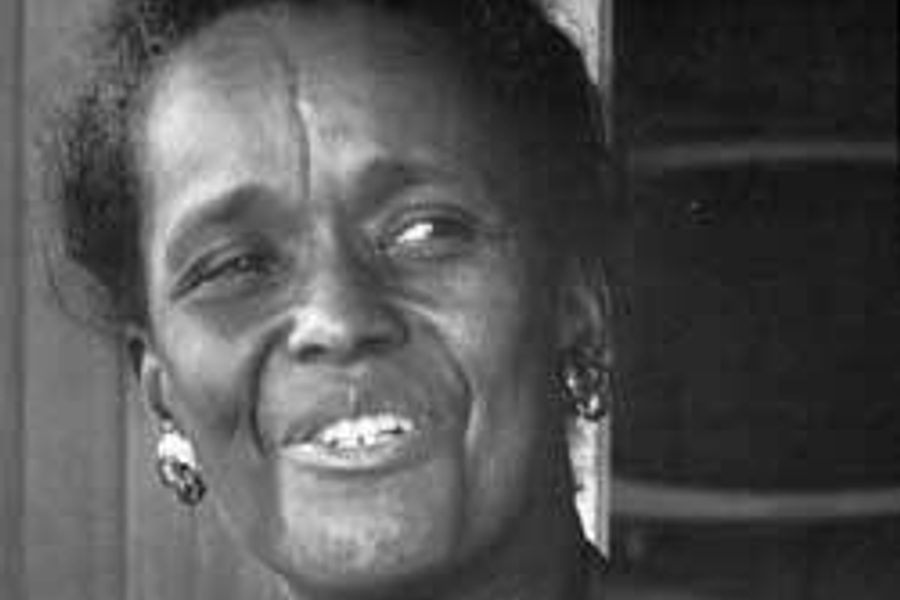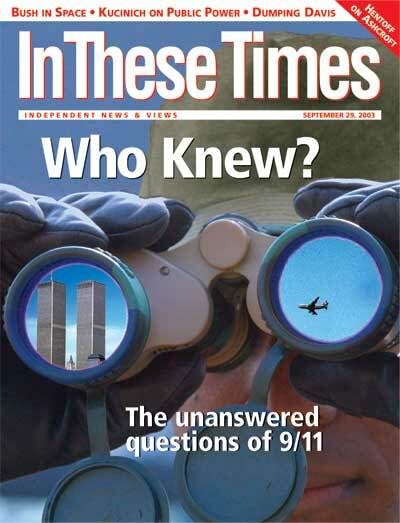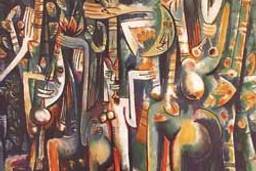
For many within the American civil rights movement, Ella Josephine Baker was a consummate organizer, a politically sophisticated intellectual, a patient teacher, faithful comrade, and in many respects a miracle worker. Like Fannie Lou Hamer, Myles Horton, Bayard Rustin, Jo Ann Gibson Robinson, Esau Jenkins, Septima Clark and countless other unsung heroes and heroines, Baker was among the prime architects of the civil rights movement, often standing just beyond the media-refracted images of mass marches, charismatic preachers and violent police reprisals. Since her death in 1986, interest in Baker’s life and legacy has grown. The handful of leadership programs and grassroots organizations that bear her name, such as the Children’s Defense Fund’s Ella Baker Child Policy Training Institute and the Bay Area’s Ella Baker Center for Human Rights testify to her continuing resonance.
Barbara Ransby’s Ella Baker and the Black Freedom Movement represents a major contribution to American historiography. She offers an authoritative, meticulously researched, intimate portrait of Baker’s captivating life. As executive director for the Public Square, a Chicago-area organization dedicated to open political debate and participatory democracy, Ransby writes as a kindred spirit. The result is a graceful, deeply personal work with even deeper political value for the contemporary American left.
Given that Baker’s political career spanned some of the most tumultuous decades of the 20th century, Ransby’s biography is in many ways a history of 20th-century progressive and radical left politics, and she writes about Baker with an eye on contemporary social struggles. For Ransby, “There are vital political and historical lessons to be gleaned by looking back in time through the lens of Ella Baker’s life.”
————–
Until now the only book-length treatment of the late activist was Joanne Grant’s pioneering 1999 biography, Ella Baker: Freedom Bound. (Grant also produced the acclaimed PBS documentary, Fundi: The Story of Ella Baker.) Ransby’s work offers a more extensive look. She delves deeper into the lesser-known facts of Baker’s personal life, particularly her “most unconventional” marriage to T.J. Roberts, her often turbulent associations with mainstream civil rights leaders like Walter White and Martin Luther King Jr., and her complicated relationship with McCarthyite anti-communism. Most importantly, Ransby makes a more aggressive attempt to contextualize Baker’s activism within wider social struggles and to analyze her distinctive political philosophy.
The task of assessing Baker’s political outlook is made difficult by her marathon commitment to organizing—more so than theorizing. Although Baker was revered by friends and foes alike for her rhetorical gifts and sharp mind, unlike many of the most well known African American leaders, she did not leave a sizable paper trail of ideas. Instead, as Ransby points out, “Baker’s theory of social change and political organizing was inscribed in her practice.” Much of the value of Ransby’s work lies in her attempts to bring Baker’s politics into sharper focus.
Over her nearly 60 years of activism, Baker developed a non-sectarian, radical democratic politics. Although she chose to work inside major civil rights organizations for much of her activist career rather than joining one of the radical left political parties, Baker was, as Ransby notes, “a harsh critic of capitalism.” And while her socialist convictions were rarely made explicit, Baker is quoted as saying, “The only society that can serve the needs of large masses of poor people is a socialist society.”
Drawing on the Italian communist Antonio Gramsci, Ransby characterizes Baker as an “organic intellectual” because “her primary base of knowledge came from grassroots communities and from lived experience, not from formal study. She was a partisan intellectual, never feigning a bloodless objectivity, but always insisting that ideas should be employed in the service of oppressed people and toward the goal of justice.” But Ransby may overreach in her attempts to cast Baker in such terms. For Baker might be seen as an “organic intellectual” only if the concept is understood in a racial sense—a move that obscures the class implications of the term.
————–
Baker was born in Norfolk, Virginia in 1903, a generation removed from slavery and partially insulated from the hardships of Jim Crow. Her childhood was spent primarily in her mother Anna Ross Baker’s hometown of Littleton, North Carolina. The Ross-Baker clan was comprised of literate landowners who were proud of their hard-fought self-sufficiency. This reality alone distinguished Baker’s formative beginnings from that of many Southern blacks whose claims to citizenship were circumscribed by debt peonage and segregation. As Ransby writes, Baker was “nurtured, educated and challenged by a community of strong, hard-working, deeply religious people—most of them women—who celebrated their accomplishments and recognized their class advantage, but who also pledged themselves to serve and uplift those less fortunate.” It was in this milieu of republican virtue, race uplift, and Christian temperance that Baker evolved.
Baker’s background and origins were not unlike that of other race leaders during the first half of the 20th century. Her mother’s involvement with the black Baptist missionary movement, Baker’s formal education at Shaw Academy and Shaw University, and her initial aspirations to become a missionary conform to broader patterns of black elite ideology and social mobility in the segregated South. These biographical details do not diminish Baker’s contribution, but rather they make her political path all the more remarkable and exemplary. Although a relatively comfortable life as a missionary or teacher was available to her, she embraced radical activism and all of the inherent dangers and sacrifices it entailed.
Likewise, as Ransby details, Baker defied the norms of middle-class female respectability through her outspokenness, nomadic lifestyle, and refusal to be bound by marital domesticity. In many respects, Baker falls closer to Gramsci’s discussion of “traditional” intellectuals, who may fulfill either a revolutionary or conservative function. Although Baker’s formative background prepared her for a life among the fledgling black elite, she chose another path.
But Ransby is nonetheless correct to draw Baker and Gramsci into conversation. Both intellectuals struggled through historical moments when the emancipatory horizons of left vanguard parties, trade unionism and state socialism were in crisis. Gramsci anticipated the kind of homegrown, working-class leaders capable of contesting capitalist hegemony, while Baker hastened the transition to more democratic organizational forms through her practice. As Ransby illustrates throughout, Baker’s radicalism challenged the centralization of authority under spokespersons—even ostensibly radical ones. In her tireless efforts to disseminate political knowledge and develop the technical skills and local organizational capacity of the poor, students and working people, she encouraged the devolution of expertise, the generalization of intellectual activity and the widening of genuine democratic participation. Baker actively cultivated “organic” intellectualism.
————–
The vibrant, cosmopolitan environment of Depression-era Harlem facilitated Baker’s radicalization. Ransby observes that after Baker resettled in New York City, “She combined the black Baptist missionary values of charity, humility and service with the economic theories of Marxists and socialists of various stripes who advocated a redistribution of society’s wealth and a transfer of power from capitalist elites to the poor and working classes.”
In Harlem, Baker befriended George Schuyler, a black journalist, anarchist, and staunch opponent of Soviet communism (and later a rabid arch-conservative). In 1931, Schuyler formed the Young Negroes Cooperative League (YNCL), which Baker joined a year later. The YNCL consisted of a loose, nationwide network of local cooperatives and buying clubs. As Ransby points out, the founding statement of the YNCL “reflected many of the principles of grassroots democracy and group-centered leadership that Ella Baker advocated for the rest of her political life.”
The group was pioneering in its push for equal participation of women and youth. Baker further honed her activist skills and pedagogy while working as a literacy teacher with the Works Progress Administration’s Worker Education Project. She subverted her role as an intellectual by eschewing authority and personal aggrandizement to facilitate greater autonomy and self-determination among working people.
Baker’s democratic style ultimately grated the egocentric, unilateral leadership styles of civil rights bureaucrats, such as the NAACP’s Walter White and Lillie Jackson. She challenged the prevailing sense that the national office, rather than the quotidian concerns of constituencies, should guide the struggle for full citizenship rights. From her tenure as field secretary and later director of branches for the NAACP during the 1940s through her role as political godmother to young activists in the Student Non Violent Coordinating Committee (SNCC) and Students for a Democratic Society (SDS), Baker insisted that democratic struggles be guided by an internally democratic process of open debate, deliberation and equal participation for all regardless of gender, income, education or status.
Along with Bayard Rustin and Stanley Levison, Baker co-founded In Friendship, an organization to develop support in the North for the Montgomery bus boycott and other desegregation campaigns. Her opportunity to become more intimately involved in the southern civil rights struggle came in 1957 when she was invited to organize the Atlanta headquarters of the newly formed Southern Christian Leadership Conference (SCLC). As Ransby points out, Martin Luther King Jr. and other ministers within SCLC were reluctant to make a firm commitment to Baker because they desired a male preacher for the post. They were persuaded to bring her on board at the urging of Levison and Rustin, who swore by Baker’s incredible organizing talents.
Sadly, some of Baker’s later pupils would eventually break from her most important lessons of radical democratic politics. First, some black power radicals veered toward the very vanguardism and personality-centered leadership styles that Baker and SNCC activists had battled earlier within the civil rights mainstream. Later, with the emergence of black political incorporation and new career opportunities for upwardly mobile blacks, many who came of age during the social upheavals of the ’50s and ’60s embraced insider politics and moderation as well-deserved “gains of the ’60s.”
Yet, despite the conservative sea change in American politics that transpired during Baker’s golden years, many of her students—like Bob Moses, Connie Curry, Charlie Cobb, Bernice Johnson Reagon and Gwendolyn Patton—continued to promote the vision of radical democracy she taught and practiced. Baker’s ability to work through ideological battles, personality conflicts, and partisan rivalries for the sake of building progressive politics is a model of activist practice worthy of emulation. Ransby’s work insures that the political spirit of Ella Baker will live on.
Barbara Ransby’s Ella Baker and the Black Freedom Movement represents a major contribution to American historiography. She offers an authoritative, meticulously researched, intimate portrait of Baker’s captivating life. As executive director for the Public Square, a Chicago-area organization dedicated to open political debate and participatory democracy, Ransby writes as a kindred spirit. The result is a graceful, deeply personal work with even deeper political value for the contemporary American left.
Given that Baker’s political career spanned some of the most tumultuous decades of the 20th century, Ransby’s biography is in many ways a history of 20th-century progressive and radical left politics, and she writes about Baker with an eye on contemporary social struggles. For Ransby, “There are vital political and historical lessons to be gleaned by looking back in time through the lens of Ella Baker’s life.”
————–
Until now the only book-length treatment of the late activist was Joanne Grant’s pioneering 1999 biography, Ella Baker: Freedom Bound. (Grant also produced the acclaimed PBS documentary, Fundi: The Story of Ella Baker.) Ransby’s work offers a more extensive look. She delves deeper into the lesser-known facts of Baker’s personal life, particularly her “most unconventional” marriage to T.J. Roberts, her often turbulent associations with mainstream civil rights leaders like Walter White and Martin Luther King Jr., and her complicated relationship with McCarthyite anti-communism. Most importantly, Ransby makes a more aggressive attempt to contextualize Baker’s activism within wider social struggles and to analyze her distinctive political philosophy.
The task of assessing Baker’s political outlook is made difficult by her marathon commitment to organizing—more so than theorizing. Although Baker was revered by friends and foes alike for her rhetorical gifts and sharp mind, unlike many of the most well known African American leaders, she did not leave a sizable paper trail of ideas. Instead, as Ransby points out, “Baker’s theory of social change and political organizing was inscribed in her practice.” Much of the value of Ransby’s work lies in her attempts to bring Baker’s politics into sharper focus.
Over her nearly 60 years of activism, Baker developed a non-sectarian, radical democratic politics. Although she chose to work inside major civil rights organizations for much of her activist career rather than joining one of the radical left political parties, Baker was, as Ransby notes, “a harsh critic of capitalism.” And while her socialist convictions were rarely made explicit, Baker is quoted as saying, “The only society that can serve the needs of large masses of poor people is a socialist society.”
Drawing on the Italian communist Antonio Gramsci, Ransby characterizes Baker as an “organic intellectual” because “her primary base of knowledge came from grassroots communities and from lived experience, not from formal study. She was a partisan intellectual, never feigning a bloodless objectivity, but always insisting that ideas should be employed in the service of oppressed people and toward the goal of justice.” But Ransby may overreach in her attempts to cast Baker in such terms. For Baker might be seen as an “organic intellectual” only if the concept is understood in a racial sense—a move that obscures the class implications of the term.
————–
Baker was born in Norfolk, Virginia in 1903, a generation removed from slavery and partially insulated from the hardships of Jim Crow. Her childhood was spent primarily in her mother Anna Ross Baker’s hometown of Littleton, North Carolina. The Ross-Baker clan was comprised of literate landowners who were proud of their hard-fought self-sufficiency. This reality alone distinguished Baker’s formative beginnings from that of many Southern blacks whose claims to citizenship were circumscribed by debt peonage and segregation. As Ransby writes, Baker was “nurtured, educated and challenged by a community of strong, hard-working, deeply religious people—most of them women—who celebrated their accomplishments and recognized their class advantage, but who also pledged themselves to serve and uplift those less fortunate.” It was in this milieu of republican virtue, race uplift, and Christian temperance that Baker evolved.
Baker’s background and origins were not unlike that of other race leaders during the first half of the 20th century. Her mother’s involvement with the black Baptist missionary movement, Baker’s formal education at Shaw Academy and Shaw University, and her initial aspirations to become a missionary conform to broader patterns of black elite ideology and social mobility in the segregated South. These biographical details do not diminish Baker’s contribution, but rather they make her political path all the more remarkable and exemplary. Although a relatively comfortable life as a missionary or teacher was available to her, she embraced radical activism and all of the inherent dangers and sacrifices it entailed.
Likewise, as Ransby details, Baker defied the norms of middle-class female respectability through her outspokenness, nomadic lifestyle, and refusal to be bound by marital domesticity. In many respects, Baker falls closer to Gramsci’s discussion of “traditional” intellectuals, who may fulfill either a revolutionary or conservative function. Although Baker’s formative background prepared her for a life among the fledgling black elite, she chose another path.
But Ransby is nonetheless correct to draw Baker and Gramsci into conversation. Both intellectuals struggled through historical moments when the emancipatory horizons of left vanguard parties, trade unionism and state socialism were in crisis. Gramsci anticipated the kind of homegrown, working-class leaders capable of contesting capitalist hegemony, while Baker hastened the transition to more democratic organizational forms through her practice. As Ransby illustrates throughout, Baker’s radicalism challenged the centralization of authority under spokespersons—even ostensibly radical ones. In her tireless efforts to disseminate political knowledge and develop the technical skills and local organizational capacity of the poor, students and working people, she encouraged the devolution of expertise, the generalization of intellectual activity and the widening of genuine democratic participation. Baker actively cultivated “organic” intellectualism.
————–
The vibrant, cosmopolitan environment of Depression-era Harlem facilitated Baker’s radicalization. Ransby observes that after Baker resettled in New York City, “She combined the black Baptist missionary values of charity, humility and service with the economic theories of Marxists and socialists of various stripes who advocated a redistribution of society’s wealth and a transfer of power from capitalist elites to the poor and working classes.”
In Harlem, Baker befriended George Schuyler, a black journalist, anarchist, and staunch opponent of Soviet communism (and later a rabid arch-conservative). In 1931, Schuyler formed the Young Negroes Cooperative League (YNCL), which Baker joined a year later. The YNCL consisted of a loose, nationwide network of local cooperatives and buying clubs. As Ransby points out, the founding statement of the YNCL “reflected many of the principles of grassroots democracy and group-centered leadership that Ella Baker advocated for the rest of her political life.”
The group was pioneering in its push for equal participation of women and youth. Baker further honed her activist skills and pedagogy while working as a literacy teacher with the Works Progress Administration’s Worker Education Project. She subverted her role as an intellectual by eschewing authority and personal aggrandizement to facilitate greater autonomy and self-determination among working people.
Baker’s democratic style ultimately grated the egocentric, unilateral leadership styles of civil rights bureaucrats, such as the NAACP’s Walter White and Lillie Jackson. She challenged the prevailing sense that the national office, rather than the quotidian concerns of constituencies, should guide the struggle for full citizenship rights. From her tenure as field secretary and later director of branches for the NAACP during the 1940s through her role as political godmother to young activists in the Student Non Violent Coordinating Committee (SNCC) and Students for a Democratic Society (SDS), Baker insisted that democratic struggles be guided by an internally democratic process of open debate, deliberation and equal participation for all regardless of gender, income, education or status.
Along with Bayard Rustin and Stanley Levison, Baker co-founded In Friendship, an organization to develop support in the North for the Montgomery bus boycott and other desegregation campaigns. Her opportunity to become more intimately involved in the southern civil rights struggle came in 1957 when she was invited to organize the Atlanta headquarters of the newly formed Southern Christian Leadership Conference (SCLC). As Ransby points out, Martin Luther King Jr. and other ministers within SCLC were reluctant to make a firm commitment to Baker because they desired a male preacher for the post. They were persuaded to bring her on board at the urging of Levison and Rustin, who swore by Baker’s incredible organizing talents.
Sadly, some of Baker’s later pupils would eventually break from her most important lessons of radical democratic politics. First, some black power radicals veered toward the very vanguardism and personality-centered leadership styles that Baker and SNCC activists had battled earlier within the civil rights mainstream. Later, with the emergence of black political incorporation and new career opportunities for upwardly mobile blacks, many who came of age during the social upheavals of the ’50s and ’60s embraced insider politics and moderation as well-deserved “gains of the ’60s.”
Yet, despite the conservative sea change in American politics that transpired during Baker’s golden years, many of her students—like Bob Moses, Connie Curry, Charlie Cobb, Bernice Johnson Reagon and Gwendolyn Patton—continued to promote the vision of radical democracy she taught and practiced. Baker’s ability to work through ideological battles, personality conflicts, and partisan rivalries for the sake of building progressive politics is a model of activist practice worthy of emulation. Ransby’s work insures that the political spirit of Ella Baker will live on.
Cedric Kwesi Johnson is a professor of political science at Hobart and William Smith Colleges. He also serves on the planning committee for the Rochester Labor Lyceum.






